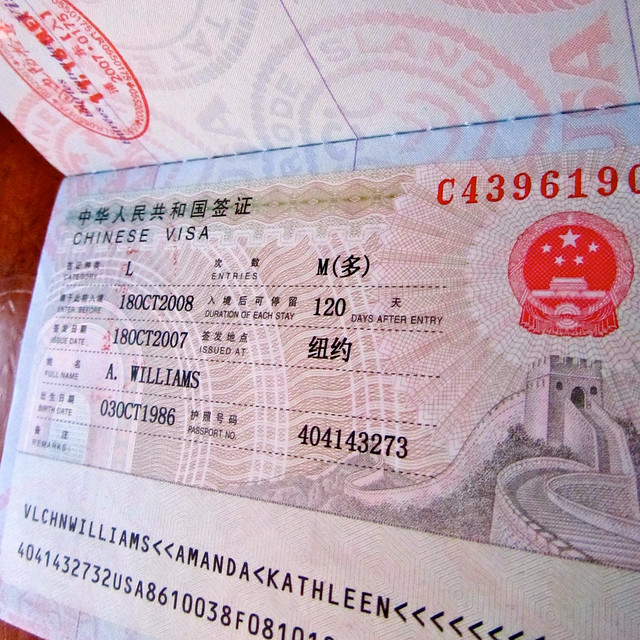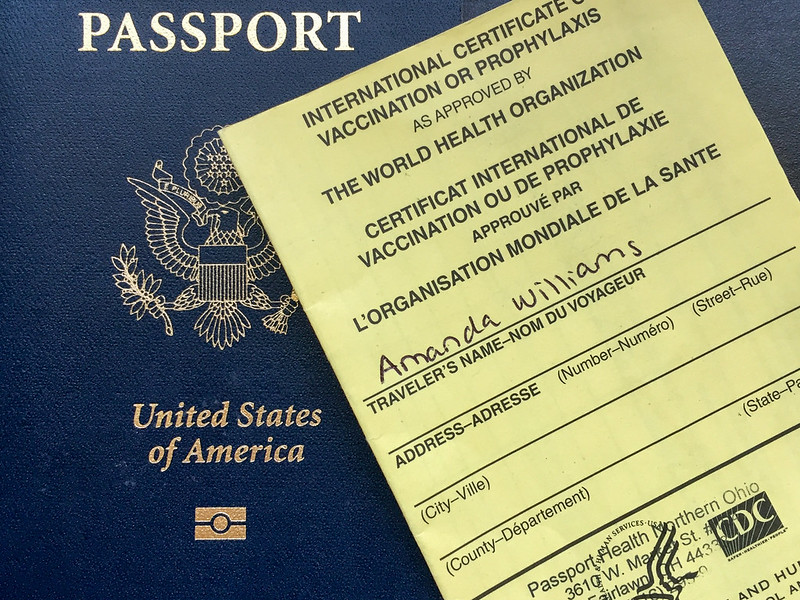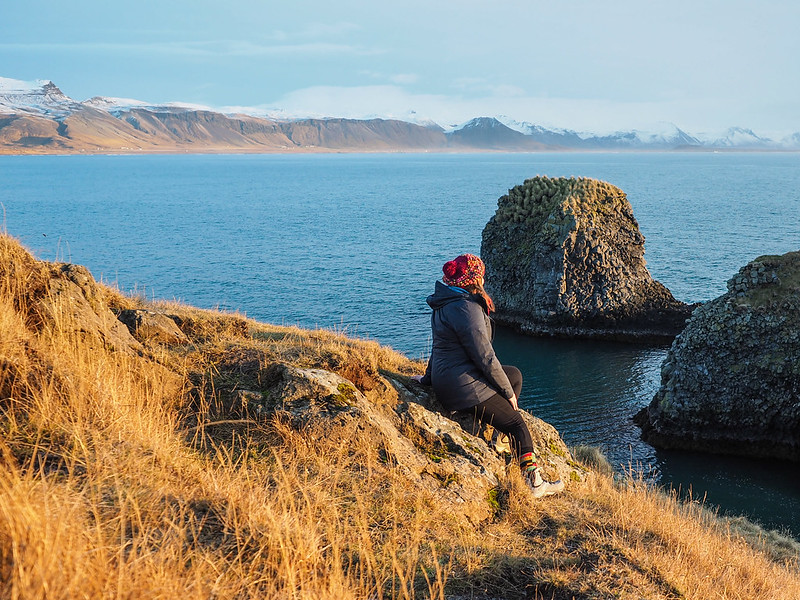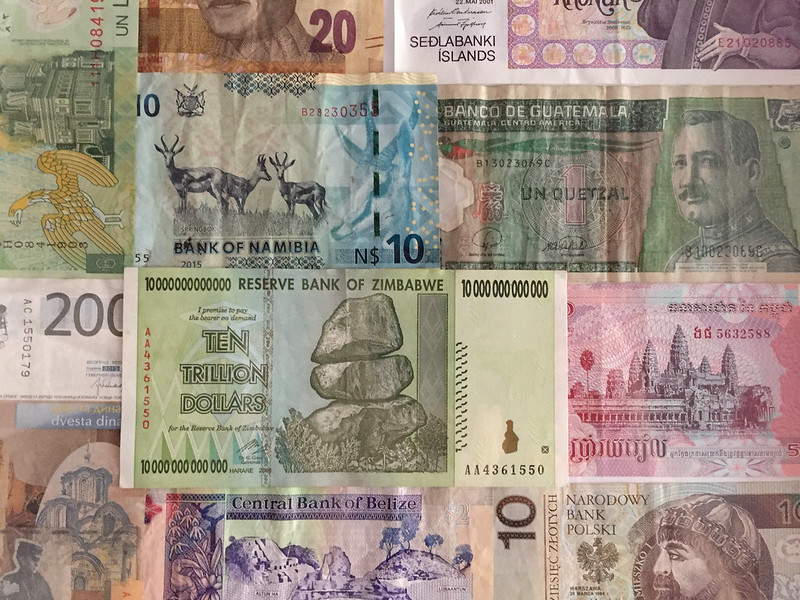Travel Checklist: 12 Things to Do Before Going on an International Trip

Even though many people consider travel to be a “getaway” from routine and a person's normal life, the truth is that traveling isn't always relaxing. In fact, travel – and especially international travel – can sometimes be downright stressful.
I actually know plenty of people who have never traveled abroad simply because they don't know where to start.
This post isn't going to be about planning an international trip – I've got another post to help you with that! Rather, this post is going to be about all the things you need to do before actually leaving on said international trip.

Pre-Trip Checklist for International Travel
Regardless of how far you're traveling, here are all the things you'll need to do before going on an international trip:
1. Check your passport
First things first: double check your passport before you book an international trip! Make sure it's not expired, AND make sure it's valid for at least 6 months after the end of your planned trip. Many countries will not let you in if your passport expires within 6 months.
You also want to make sure your passport isn't full (two fully blank pages are required for entry to some countries).
If you need to renew your passport, be sure to give yourself plenty of time.
2. Know whether you need a visa
If you're an American traveler like me, you're lucky. We are able to visit many countries around the world without needing to apply for a visa beforehand. Some countries will require nothing more than a passport stamp, while others will enable you to get your visa when you arrive in the country.
But don't just assume that because you carry a US (or Canadian or British or Australian) passport that you can travel visa-free to any country.

You may still need to go through the visa application process for certain countries (like China), or apply for a visa-on-arrival online before you travel to countries like Vietnam and Tanzania. Going to Australia? Then you'll need to get an Electronic Travel Authority online before you leave home.
And note that, beginning sometime in 2024, US travelers will need to register with the European Travel Information and Authorization System (ETIAS) for any trips to the Schengen Zone.
Be sure to check visa requirements for the country(ies) you'll be traveling to as soon as you book your trip – don't assume anything, and don't leave this go until the last minute. I usually use travel.state.gov to check visa requirements for American travelers.
3. Get vaccinated if you need to
When I'm planning a trip to anywhere that's not in the US, Canada, or Western Europe, I double-check with the CDC website to see whether or not I need any vaccines in order to travel. (And before you tell me not to “get political,” know that countries have had vaccination entry requirements long before COVID-19 existed.)
You can use the CDC site to learn about recommended and required vaccinations for any country in the world. In general, you'll want to have all your routine vaccines (like MMR, tetanus, etc.) up to date. If you're traveling to less-developed parts of the world, you also may want to consider Hepatitis A and Typhoid vaccines, since both can be transmitted through contaminated water.

Malaria is also something you'll want to read up on if you're visiting any tropical areas, or certain parts of Africa and southern Asia. Some places have a higher malaria risk than others. If you're traveling to a high-risk area, you'll probably want to visit a doctor to get an anti-malarial prescribed.
RELATED: Travel in the Time of Zika: How to Avoid Mosquitos on the Road
The only vaccine that is frequently required around the world is the one for yellow fever. Some countries outside of yellow fever zones still require you to show proof of vaccination if you're traveling from a country where the mosquito-borne disease is prevalent. The yellow fever vaccine isn't cheap, but it's guaranteed to be cheaper than being turned away at a border if you need the vaccine and don't have it.
4. Purchase travel insurance
It's not nice to think about, but getting injured/sick is a possibility whenever you travel. Plenty of other not-so-nice things can happen to you while you're abroad, too, like having an airline lose your luggage, or getting pickpocketed on the street.
For this reason, having travel insurance is vital.

When it comes to getting sick on the road, your current health insurance provider might already cover you overseas – you'll just need to call and check. If this is the case, you still might want to invest in a basic insurance plan that will cover you in the event of a canceled trip or other non-health-related misfortune on the road.
If your current insurance doesn't cover you abroad, be sure to buy a full-coverage travel insurance plan (and make SURE it includes medical evacuation!). I've actually known several people who have needed hospital stays or to be evacuated home because of illness/injury partway through a trip.
5. Call your bank/credit cards
A couple of days before you leave, be sure to alert your bank and credit card companies that you'll be out of the country and will be potentially using your card(s) abroad. This helps lessen the likelihood that your card will be declined or shut down for suspicious activity when you're trying to use it overseas.
Most credit cards will have a customer service number on the back you can call to do this, while many even let you enter travel notifications online these days.

6. Know how you'll get local currency
Speaking of bank cards, have a plan for how you'll get some local currency.
Most countries accept credit cards these days (with Visa and MasterCard being the most widely-accepted), and in some European countries especially, things have largely gone cash-less.
But if you still want to have local currency on you, or if you're traveling somewhere that still primarily uses cash, there are a few ways to go about getting currency for your trip:
- You can order currency from your bank a few weeks before you leave.
- You can exchange money when you arrive (though note that airport exchange counters offer the most awful exchange rates – exchange at a bank if you can!).
- You can use your debit card at a local ATM – this is what I prefer to do!

(And if you're traveling to a mostly cash-free country? Then be sure to have at least 2 cards on you, and it consider having Apple Pay/Google Pay set up on your phone.)
7. Have a travel-friendly credit card
If you don't already have a credit card with no foreign transaction fees, consider getting one if your credit is good and you don't have a lot of debt (responsible credit usage, people!). Foreign transaction fees are annoying and can really start to add up – so make sure to have a way around them if you don't plan to pay for everything in cash.
Need suggestions on a good travel-friendly card? This post from The Points Guy offers a lot of great suggestions. You may as well choose a card that will earn you travel rewards while you're at it!
8. Research transport for your arrival
If you're booking a tour or organizing your trip through a travel agent, transport from the airport to your first hotel may already be arranged for you. But if you're planning your trip independently, it's a good idea to read up on your transport options before you leave home.
How much would a taxi cost? Does Uber or Lyft or another rideshare program exist? Does your hotel have a shuttle? Is public transport available and easy to navigate?

Finding the answers to these questions before you leave will cut down on the stress of arriving in a strange airport after a (likely) long flight. I know the last thing I want to do after a long overnight flight is try to figure out how to leave the airport.
9. Pack appropriately
Make sure you know what the weather will be like wherever you're going. Remember that seasons are different depending where in the world you are, and that “summer” and “winter” can vary from continent to continent! Know what season you'll be packing for well in advance, and then keep an eye on the weather forecast for exactly where you'll be in the week leading up to your trip.
Also make note of whether there are any cultural norms to take into account. For example, many Middle-Eastern and Asian countries are much more conservative when it comes to dress, meaning you may need to avoid packing things like tank tops and shorts.
Check out my packing lists page for country-specific packing lists.

You should also check what type of power outlets you'll encounter on your trip. Voltage doesn't matter so much any longer (most electronics and chargers can operate internationally with no problem), but you will likely need an adapter for wall plugs. I like this multi-country adapter from Skross, which will work in just about any country.
Lastly, you'll want to ensure that everything you're packing is going to stay safe. I love Pacsafe's line of theft-proof bags, and highly recommend grabbing a RFID-blocking, slash-proof backpack or handbag. In certain parts of the world, a portable safe also isn't a bad idea!
RELATED: How to Keep Your Money and Valuables Safe on Your Travels
10. Make copies of important documents
Passport, tickets, reservation confirmations… it's a good idea to have hard copies of things, and to also have photocopies of important documents like your passport – just in case! Keep these copies somewhere safe, ideally separate from the originals.
(I also have a digital copy of my passport – just a photo of the main page – saved on both my phone and laptop.)
11. Make sure someone knows your plans
And speaking of those important documents, be sure to leave a copy of your itinerary with someone at home. This is especially important if you're traveling solo, to ensure that someone knows where you should be and when.
Thankfully, it's easier than ever to stay in touch on the road. Wifi is widely available in most parts of the world, and international phone/texting plans and apps like WhatsApp make it easy to check in with friends and family back home. When I travel alone, I make sure to check in with someone at home every few days.
If you want to take things a step further, you can also register your trip (if you're American) with the nearest U.S. Embassy or Consulate by enrolling in the Smart Traveler Enrollment Program (STEP). STEP is free, and essentially makes it easier for your family or an Embassy to contact you in the event of an emergency.
12. Do a little homework
Lastly, do a little homework about your destination before you leave home. Read up not only on things to do and foods to eat, but also familiarize yourself with common scams to watch out for, how public transportation works, and if there are any areas you should avoid.
Learning a few phrases in the local language (especially things like “hello” and “thank you”) will also go a long way. Lonely Planet has quite a few useful phrasebooks that you might want to check out.
READ NEXT: How to Plan an Awesome Trip in 16 Easy Steps
And then, once your checklist is complete, be sure to relax and enjoy yourself!
Are there any other things on your to-do list before leaving on an international trip?

Amanda Williams is the award-winning blogger behind A Dangerous Business Travel Blog. She has traveled to more than 60 countries on 6 continents from her home base in Ohio, specializing in experiential and thoughtful travel through the US, Europe, and rest of the world. Amanda only shares tips based on her personal experiences and places she's actually traveled!











You’re the best! You give such great advice and guidance and I dearly love following you on your travels. Keep up the great work.
Thanks so much, Sarah!
Thanks Amanda. Going on my first international trip soon. Lots of good ideas.
A travel adapter for the various electrical sockets is an absolute must.
Wow, its really very helpful checklist for travelling.
That´s an amazing travel checklist!
Since I read it here, I´ve made a copy of all my documents and stored online!
That’s great, Renata! A very smart thing to do!
This might sound like a silly one, but if you take pictures on multiple devices (e.g., camera and phone), make sure the clocks on both are set the same. It makes it so much easier to pick your favorite photos if all the ones from any given site/outing can be grouped together just by sorting by date.
Definitely a useful tip for all the travel photographers!
Very informative post! Great post and lovely pictures!
Great Tips Amanda! After advancement in technology, people generally avoid hard copies as they save all important documents copy in there phones, but keeping hard copies is really a smart tip. As you said, just in case! Thanks
You just never know when technology is going to fail you!